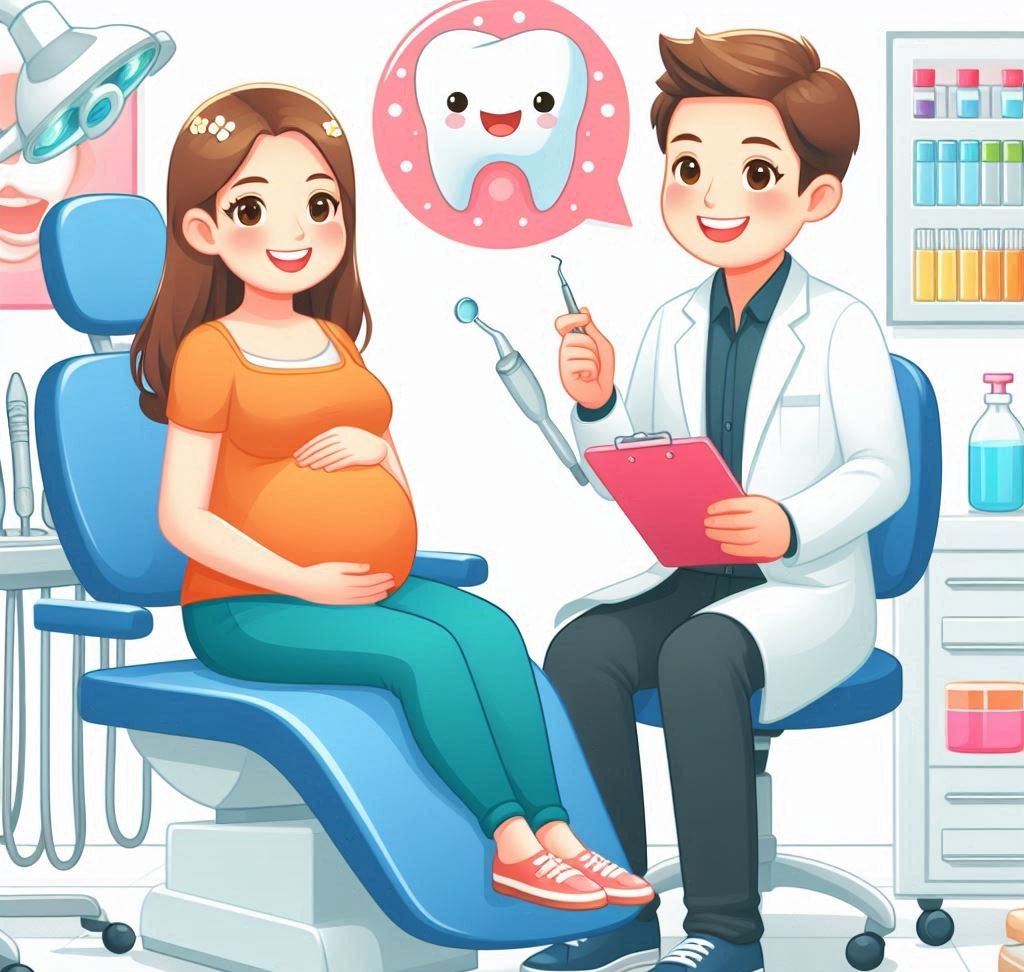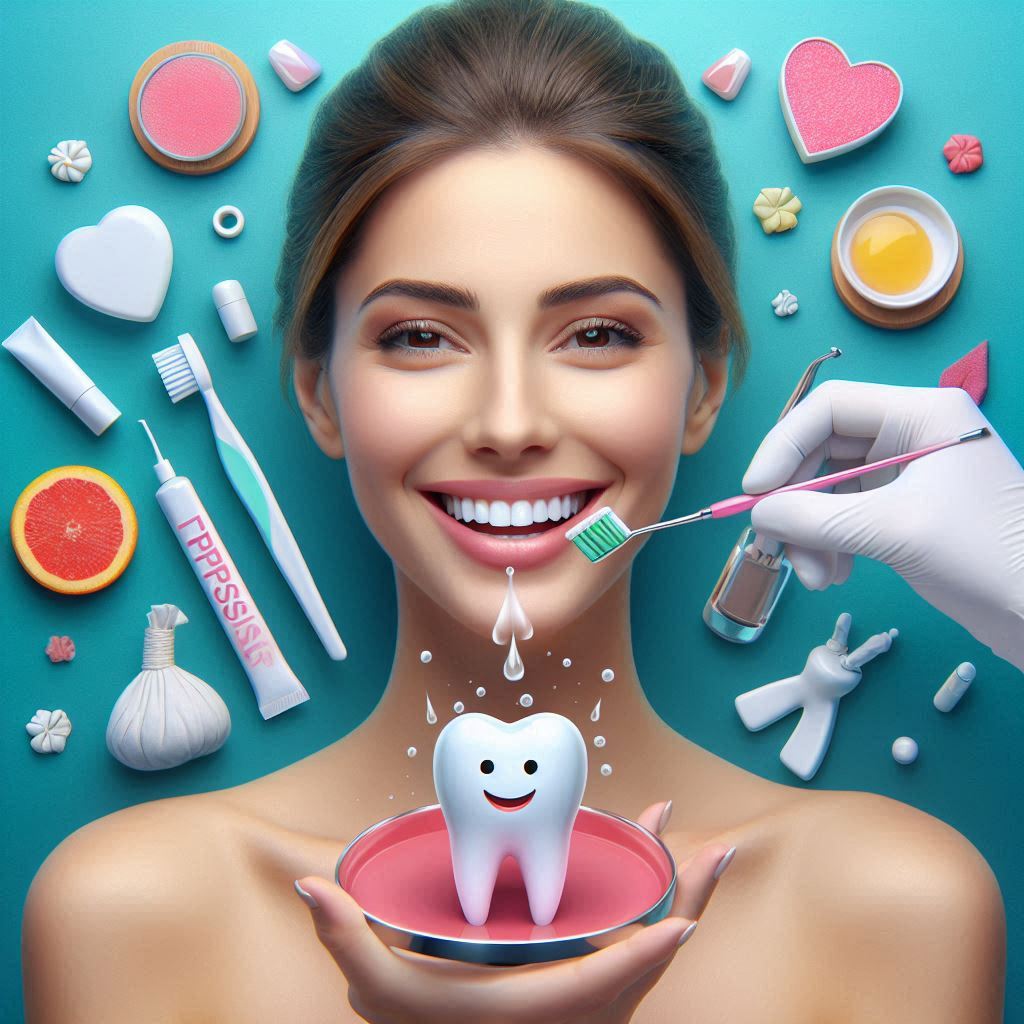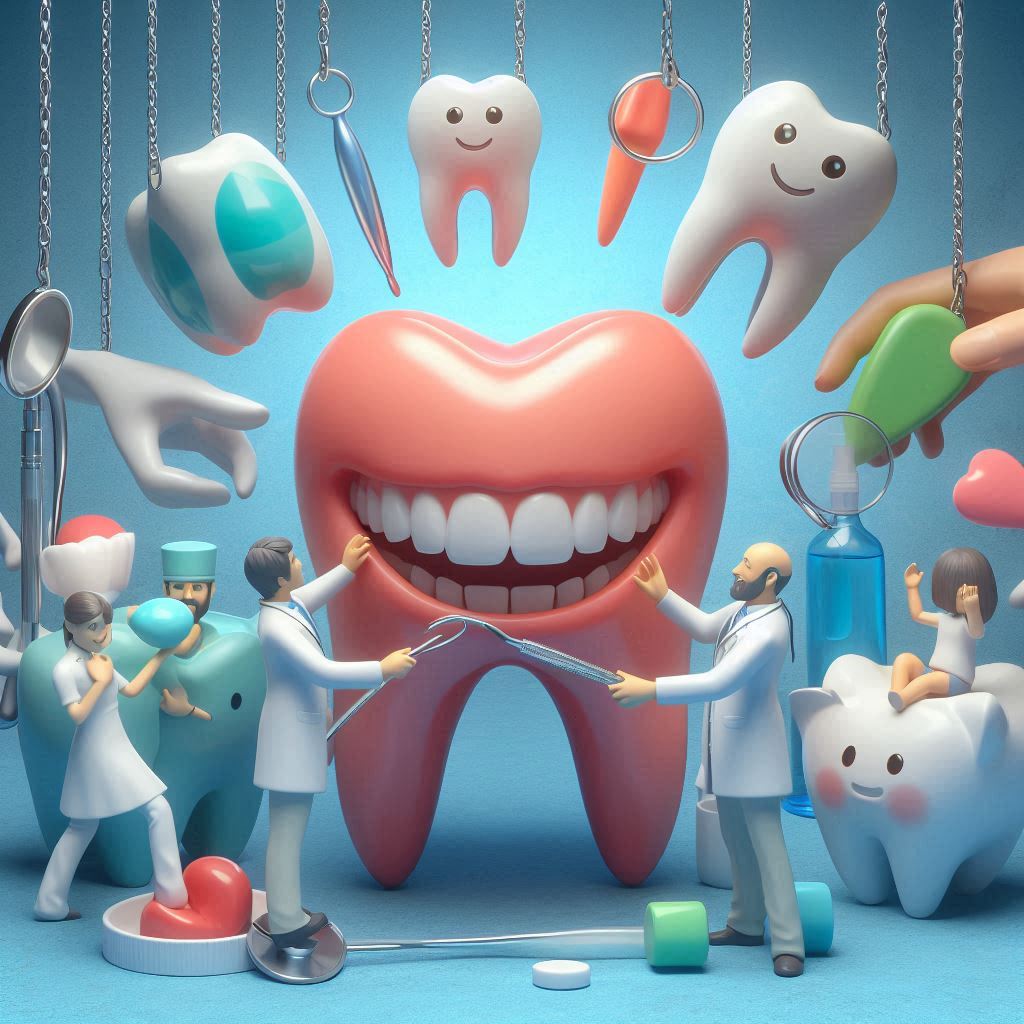Pregnancy is a unique and transformative experience, not just for a woman’s body but for every aspect of her health, including her dental care. While most expectant mothers focus on prenatal care, diet, and overall health, dental health during pregnancy is often overlooked. The hormonal shifts, changes in oral hygiene habits, and new eating patterns that come with pregnancy can all have significant effects on your dental fillings, tooth enamel, and the overall health of your teeth.
This guide aims to address how pregnancy can impact your dental health, providing you with an understanding of the changes that occur and how to protect your teeth and fillings throughout the nine months. From hormonal changes and increased sensitivity to acid erosion, we will explore the various ways pregnancy affects dental health and how to ensure you maintain a healthy, pain-free smile.
Pregnancy and Hormonal Changes
Pregnancy causes a whirlwind of hormonal changes, the most notable of which are the surges in estrogen and progesterone. These hormones help maintain a healthy pregnancy, but they also influence the gums, teeth, and even the materials used in dental fillings.
Estrogen and Progesterone’s Impact on Gums
Estrogen and progesterone play a crucial role in pregnancy, but they also cause increased blood flow to the gums, which can lead to inflammation. The more sensitive gums are during pregnancy, the more prone they are to swelling, irritation, and bleeding. For many women, this manifests in pregnancy gingivitis, an early form of gum disease characterized by swollen, bleeding gums, especially when brushing or flossing.
Pregnancy gingivitis is fairly common and typically appears during the second or third month of pregnancy. If left untreated, gingivitis can progress to more severe forms of gum disease. This condition is generally reversible with proper dental care, including brushing with fluoride toothpaste and flossing daily. Women are also encouraged to visit the dentist regularly to monitor the condition of their gums.
Pregnancy Tumors: What Are They?
Pregnancy tumors, also known as pyogenic granulomas, are non-cancerous growths that may appear on the gums during pregnancy, usually between the second and third trimesters. They are typically reddish, puffy bumps that may bleed, particularly when brushing your teeth. The exact cause of these tumors is still unknown, but they are believed to be linked to hormonal changes and increased plaque buildup in the mouth.
Though pregnancy tumors sound alarming, they are generally harmless and often shrink or disappear after childbirth. However, if they cause pain or interfere with oral hygiene, your dentist may recommend removal or other treatments.
How Pregnancy Affects Tooth Enamel and Fillings
Hormonal changes during pregnancy are not just limited to the gums; they can also affect the enamel of your teeth. Enamel is the protective outer layer of your teeth, and any weakening or erosion of this enamel can increase the likelihood of tooth sensitivity and decay. Additionally, existing dental fillings—whether amalgam, composite, or ceramic—may also be affected by the body’s changing chemical environment.
Increased Tooth Sensitivity
Many women experience increased tooth sensitivity during pregnancy, often due to the hormonal fluctuations that affect the nerves in the teeth. Sensitive teeth may react to hot, cold, sweet, or sour foods, and fillings in these teeth may exacerbate the sensitivity. This is particularly true if the fillings were placed near the gum line, as pregnancy-induced gum swelling or recession can impact the fit of the filling.
While increased sensitivity is often temporary and manageable, it’s important to talk to your dentist about any discomfort. They may be able to adjust the fillings or recommend desensitizing toothpaste to help alleviate the pain.
Impact on Amalgam Fillings
Amalgam fillings, made from a mixture of metals such as silver, tin, and mercury, have been in use for over a century due to their durability and strength. However, some expectant mothers may be concerned about the potential for mercury exposure from these fillings. Research indicates that the amount of mercury released by amalgam fillings is minimal, and there is no significant risk to either the mother or the developing fetus.
That being said, pregnancy-induced hormonal fluctuations can alter the bond between the tooth and the amalgam filling slightly, leading to some loosening or sensitivity. However, this is generally rare and does not pose a serious risk to oral health.
Impact on Composite Fillings
Composite fillings, which are made of tooth-colored resin, are often used for aesthetic purposes. While these fillings bond more easily to the natural tooth, pregnancy-induced changes in the mouth’s pH can cause the bond to weaken, potentially leading to some shifting or loosening of the filling. As pregnancy increases acidity in the mouth, due to acid reflux or vomiting, the composite material may also weaken or wear down over time.
If you notice any issues with your composite fillings, such as shifting or discomfort, it is best to consult your dentist. They may need to reapply or replace the filling, especially if it becomes dislodged or loose.
The Impact of Acid Erosion on Teeth and Fillings
One of the most significant concerns for pregnant women in relation to dental health is the increased frequency of acid exposure to teeth, which can lead to enamel erosion. Erosion occurs when stomach acids make contact with the teeth and weaken the enamel, resulting in tooth sensitivity, decay, and the potential loosening or weakening of fillings.
Morning Sickness and Vomiting
Morning sickness, which affects many women in the first trimester, leads to frequent vomiting. This can expose the teeth to stomach acids that wear down the enamel. It’s important not to brush your teeth immediately after vomiting because the enamel is temporarily softened by the acid, and brushing too soon can cause further damage.
Instead of brushing immediately, rinse your mouth with water or a fluoride mouthwash to neutralize the acids. After about 30 minutes, you can brush your teeth to remove any remaining acid and food particles. Using a soft-bristled toothbrush and fluoride toothpaste will help preserve enamel integrity.
Acid Reflux and GERD
Gastroesophageal reflux disease (GERD) is another condition that pregnant women may experience due to hormonal changes that relax the muscles around the esophagus. This can cause stomach acids to flow back into the mouth, where they can weaken tooth enamel. If left untreated, acid reflux can lead to enamel erosion and potential damage to dental fillings.
Managing acid reflux is important for both overall and dental health. Speak to your doctor about managing the condition, and if you experience frequent acid reflux, your dentist may recommend fluoride treatments or additional precautions.
Saliva Changes During Pregnancy
Saliva plays an essential role in oral health by neutralizing acids, washing away food particles, and helping to prevent tooth decay. Pregnancy, however, can bring about significant changes in the amount and composition of saliva produced, which can affect the health of your teeth and fillings.
Dry Mouth (Xerostomia)
Some women experience dry mouth during pregnancy, which may result from hormonal fluctuations, dehydration, or side effects of medications. Dry mouth can lead to increased plaque buildup, which in turn can increase the risk of tooth decay. In such cases, the longevity of dental fillings may also be compromised.
To manage dry mouth, stay hydrated, and consider using saliva substitutes or sugar-free gum to stimulate saliva production. Additionally, make sure to maintain regular dental checkups to help keep your oral health on track.
Excessive Saliva Production
On the other hand, some women experience increased saliva production, particularly during the first trimester. While this can be uncomfortable, it may have the benefit of helping to wash away food particles and bacteria from the mouth, reducing the risk of cavities and plaque buildup.
However, excessive saliva can also contribute to plaque buildup if left unchecked. Regular brushing and flossing are key to maintaining a healthy balance.
Diet and Its Effects on Tooth Health and Fillings
Pregnancy often comes with dietary changes—cravings, nausea, and a higher need for certain nutrients. These dietary changes can have both positive and negative effects on oral health, including the integrity of fillings and the risk of developing tooth decay.
Increased Sugar Intake
Pregnancy cravings for sugary foods and snacks can increase the risk of tooth decay. Sugar feeds the bacteria in your mouth, which produce acids that can erode enamel and weaken fillings. To minimize the impact of sugar, it’s crucial to balance cravings with healthy snack options, such as fruits, vegetables, or nuts, which are less likely to cause cavities.
Calcium and Vitamin D Deficiency
Calcium and vitamin D are vital for both the health of the developing baby and the strength of the mother’s teeth and bones. A lack of these nutrients can make tooth enamel weaker and more susceptible to decay. If you’re not getting enough calcium or vitamin D from your diet, supplements may be necessary.
Acidic Foods and Beverages
Citrus fruits, soda, and other acidic foods or drinks can weaken tooth enamel. If you’re consuming acidic foods regularly, try to rinse your mouth with water afterward to neutralize the acids. This will help protect both your natural teeth and fillings from long-term damage.
Tips for Maintaining Oral Health During Pregnancy
Good oral hygiene is essential throughout pregnancy to help maintain the health of your teeth and fillings. Here are some important steps to take to protect your dental health during this time:
Brushing and Flossing
Brush your teeth at least twice a day with fluoride toothpaste, especially after meals or snacks, to remove food particles and prevent plaque buildup. Floss daily to remove debris between your teeth and along the gum line, where brushing may miss. A soft-bristled toothbrush is recommended to minimize irritation to sensitive gums.
Regular Dental Checkups
Maintaining regular dental visits is important to monitor the condition of your teeth and fillings. Your dentist will check for any signs of gum disease, cavities, or issues with existing fillings. Regular cleanings can help prevent the buildup of plaque, which can lead to further complications.
Fluoride Treatments
Fluoride strengthens tooth enamel and helps prevent cavities. Your dentist may recommend fluoride treatments during pregnancy to help protect both your teeth and fillings.
Conclusion
Pregnancy brings many changes to a woman’s body, including shifts in dental health. Hormonal fluctuations, dietary changes, and physical discomforts like nausea and vomiting can all impact the health of your teeth and the longevity of your fillings. However, with good dental hygiene practices, regular checkups, and awareness of the changes pregnancy brings, you can ensure that your dental health remains strong.
If you’re concerned about any changes to your teeth or fillings during pregnancy, consult with your dentist to discuss the best plan for maintaining your oral health. With the right care, you can navigate pregnancy with a healthy smile and a positive outlook on your dental health.
SOURCES
Akhter, S. & Rahman, M. (2017). Pregnancy and oral health: An overview of pregnancy-induced changes in the oral cavity. Journal of Oral Biology and Craniofacial Research, 7(3), 165-171.
Al-Qudah, A., & Alomari, M. (2019). Effects of pregnancy on oral health: A literature review. International Journal of Women’s Health, 11, 59-65.
Chaffee, B. W., & Chong, L. Y. (2020). Impact of pregnancy on periodontal health: A review. Journal of Periodontology, 91(5), 561-570.
Chavez, L., & Thomson, W. M. (2015). Pregnancy-related oral health conditions: Risk factors and implications. Journal of Clinical Periodontology, 42(4), 352-358.
Dudley, W. N., & Hays, C. A. (2016). Hormonal changes during pregnancy and their impact on dental health. Dental Clinics of North America, 60(3), 527-536.
Ferreira, M. D., & Castilho, A. R. (2018). The effects of pregnancy on dental fillings and restorations: An overview. Journal of Esthetic and Restorative Dentistry, 30(2), 137-144.
Gao, X., & Liu, J. (2018). Influence of pregnancy on oral health and its impact on the general health of pregnant women. Chinese Journal of Dental Research, 21(4), 237-245.
Glaros, A. G., & Baker, J. L. (2019). Bruxism and the effect of pregnancy: Implications for dental treatment. Journal of the American Dental Association, 150(5), 378-384.
Javadian, M., & Vahidi, A. (2020). The relationship between pregnancy and dental caries in women: A systematic review. Journal of Clinical Dentistry, 31(2), 109-115.
Kazi, A. H., & Hussain, M. A. (2017). Effects of pregnancy on oral health and preventive strategies. Pakistan Journal of Medical Sciences, 33(4), 899-904.
Liu, C. L., & Hu, D. T. (2019). Pregnancy-induced gingivitis and its relationship with systemic health: A clinical review. Journal of the Chinese Medical Association, 82(3), 204-211.
Mastoroudes, H. P., & Spiegel, S. L. (2021). Dental management during pregnancy: Guidelines and best practices. Journal of Dental Practice and Research, 36(1), 14-23.
Pattison, L., & Thorne, S. J. (2018). Pregnancy and oral health: Effects, management, and prevention. British Dental Journal, 224(5), 317-322.
Santos, M. M., & Morais, T. M. (2016). Saliva and its role in dental health during pregnancy. Archives of Oral Biology, 66, 27-32.
Thomas, A. S., & Wang, D. P. (2017). Impact of acid reflux and vomiting on dental health during pregnancy. Journal of Clinical Gastroenterology, 51(10), 876-880.
Vargas, C. M., & Kumar, S. A. (2016). Diet and pregnancy: Implications for oral health during the prenatal period. American Journal of Public Health, 106(9), 1605-1612.
Walker, C. A., & Gilbert, J. S. (2017). Oral hygiene practices during pregnancy and their effect on the development of pregnancy gingivitis. The Journal of Perinatal Education, 26(4), 215-220.
HISTORY
Current Version
February 22, 2025
Written By:
SUMMIYAH MAHMOOD




